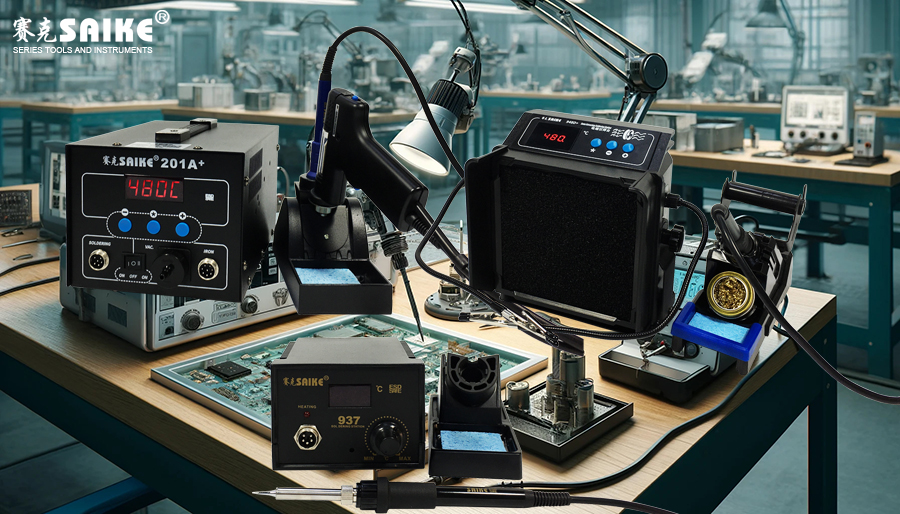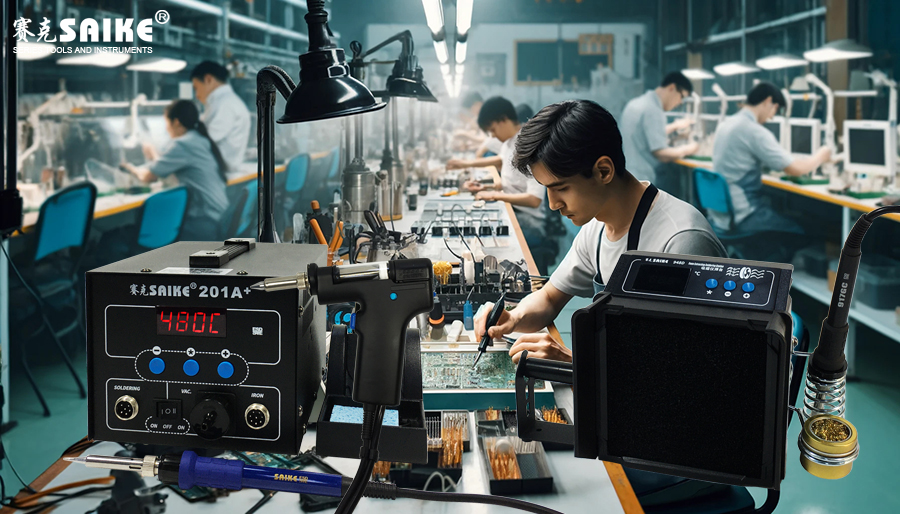
SK-YJ000HT-KP 100002
Soldering stations, as indispensable equipment in the soldering process, can be classified into various types based on usage scenarios, functions, and forms. Here is a detailed introduction and summary of the characteristics of various soldering stations:
I. Handheld Soldering Station
– Characteristics:
– Portability: Compact size and easy to carry, suitable for soldering in various environments.
– Flexibility: Due to its handheld design, welders can move and operate freely, ideal for welding small or irregularly shaped parts.
– Easy to operate: Usually designed for easy one-handed operation, simplifying the soldering process.
II. Benchtop Soldering Station
– Characteristics:
– Stability: Has a larger work surface, providing a stable soldering environment.
– High power: Usually equipped with more powerful heating elements, suitable for soldering large workpieces.
– Automatic setting: Advanced models support automatic control, such as presetting temperature, time, and other parameters to improve production efficiency.
– Versatility: Some benchtop soldering stations also have additional functions such as temperature adjustment and fan cooling.
III. Automatic Soldering Station
– Characteristics:
– High efficiency: Complete soldering through robots or automation equipment, greatly improving production efficiency.
– High precision: The automated control system ensures the accuracy and consistency of soldering.
– Reduce manpower: Reduce the intensity and dependence of manual operations, suitable for mass production.
– Enhanced safety: Reduce direct human exposure to the soldering process, reducing safety risks.
IV. Micro Soldering Station
– Characteristics:
– High-precision processing: Especially suitable for soldering tiny, precision parts.
– Professional tool equipment: Usually equipped with various micro-soldering tools and auxiliary equipment.
– Fine operation: Requires operators to have a high level of technical proficiency and patience.
V. Conclusion
In addition to the above classifications, soldering stations can also be classified according to other criteria, such as manual soldering stations and automatic soldering stations based on usage, or fixed soldering stations and mobile soldering stations based on functions and characteristics. Fixed soldering stations provide a more stable working environment, suitable for long-term continuous operations; while mobile soldering stations are convenient for quick movement between different work positions, suitable for tasks requiring flexibility such as maintenance and installation.
Furthermore, different soldering stations may be optimized for specific soldering methods (such as arc welding, gas-shielded welding, laser welding, etc.) and provide additional functions such as temperature adjustment and smoke removal to meet diverse soldering needs.
Overall, there are various types of soldering stations, and each type has its unique characteristics and application scenarios. Choosing the right soldering station is crucial to improving soldering quality, efficiency, and safety.


